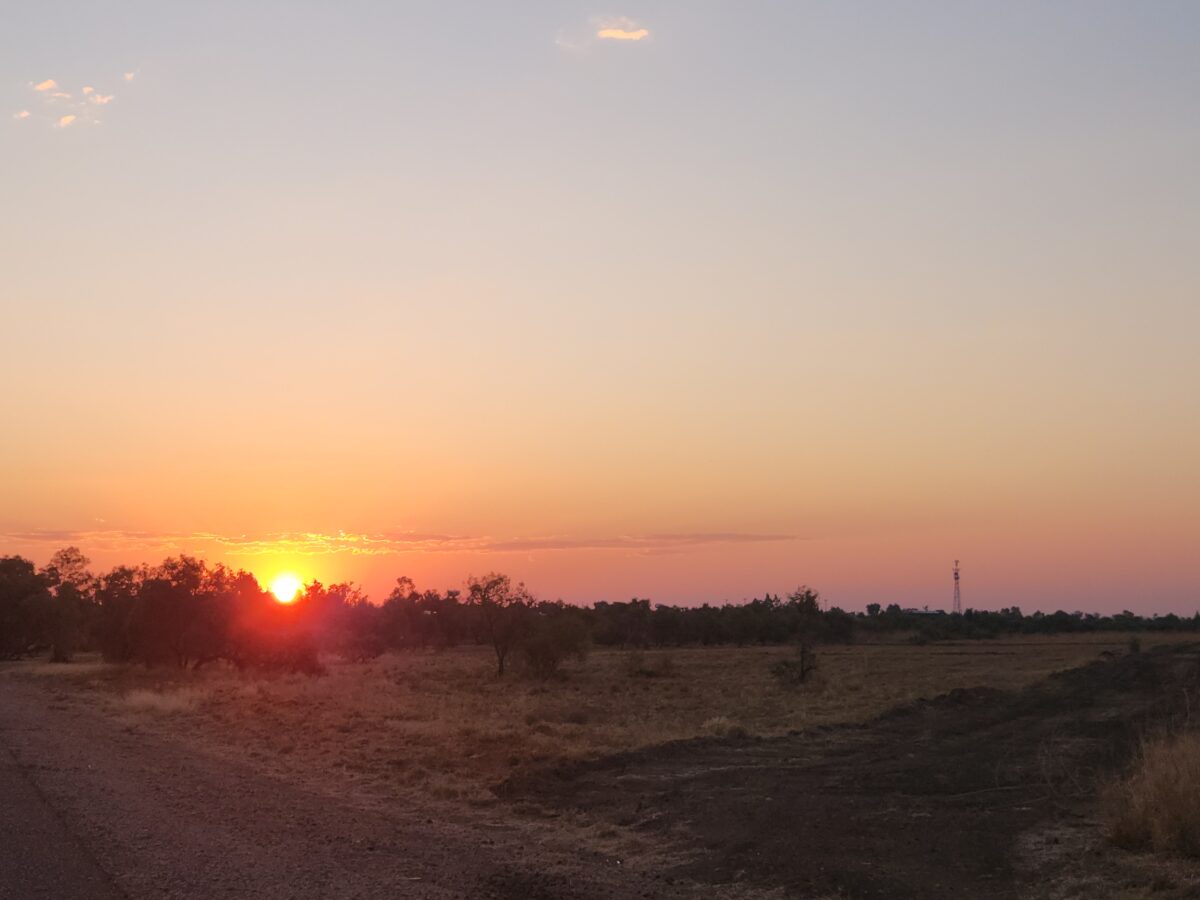“I love district nursing and I love nursing and I love New Zealand,” said the nurse, who Kaitiaki agreed not to name. “It’s bittersweet, but I don’t think I want to nurse here anymore.”
The nurse — let’s call her ‘Skye’ — attended NZNO’s rally for safer staffing in Porirua last week while on holiday in Wellington.
Skye first left for Australia early in 2023 after finding her district nursing role here too demanding.
‘It’s still a stressful environment . . . But because you all have the lesser ratio, you all can help each other and so there was more time found to go over problems.’
Her first contract was in a remote hospital in the small Queensland mining town of Mt Isa, population 20,000.
Queensland introduced legislated minimum nurse/midwife to patient ratios in 2016 for acute medical and surgical wards, and some mental health units, after nearly 10 years of lobbying by the Queensland Nurses & Midwives Union (QNMU). In 2019, it was extended to all adult acute mental health wards. In 2023, Queensland also committed to implement midwifery ratios in all public maternity wards by 2026.
NZNO — Tōpūtanga Tapuhi Kaitiaki o Aotearoa is campaigning for legislated ratios for nurses here.
Working with mandated staffing levels for the first time in her life, Skye found herself caring for just four patients on the medical ward, instead of the usual five or six in New Zealand’s medical wards.
“It was amazing — you had a lot more time to do the care you would like to do, so it was more holistic,” she said.
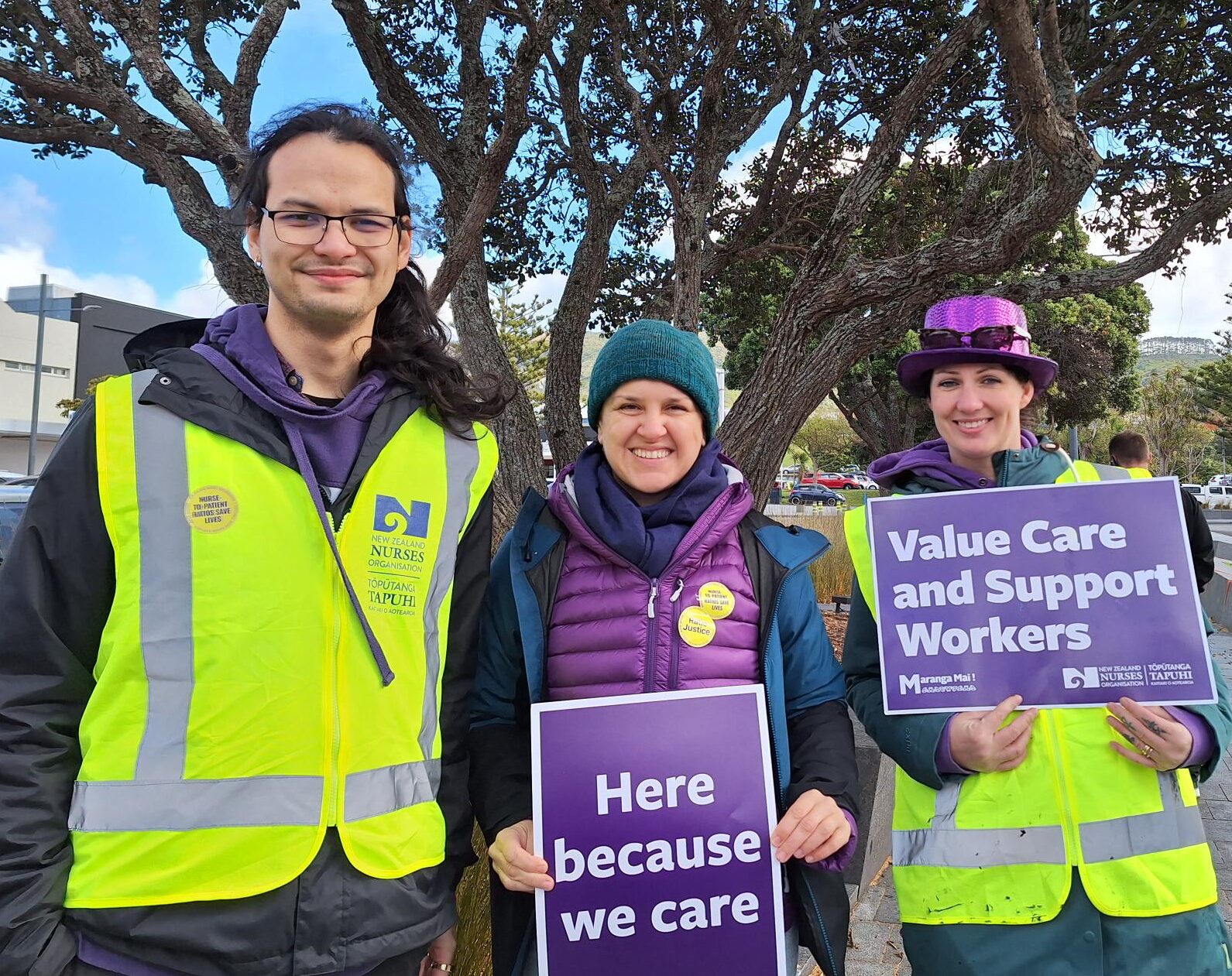
Only once in her three month stint there did Skye see a nurse taking on more than four patients.
“When you’re trying to assess deteriorating patients and rapidly assess people, four people was really manageable. Whereas five, I found in New Zealand, there was always your one stable patient who – I hate to say this – would get a bit ignored.”
‘Five to six was the norm [in NZ] – you’d never, ever have under five patients, it just didn’t happen.’
However, there were few health-care assistants (HCAs) on the floor in the Queensland hospital as their task was often watching patients with delirium or dementia.
“So you’d have four patients, but you would do everything,” she said. “New Zealand’s quite different . . . you have five patients but you have HCAs on the floor who will help you.”
Skye’s next contract was at Julia Creek, a tiny remote town of about 500 in the Queensland Outback. Working in its multi-purpose health service, which combined emergency services with general practice and aged care, she said ratios were similarly “really low”.
It was either “all go” or relatively quiet, she said.
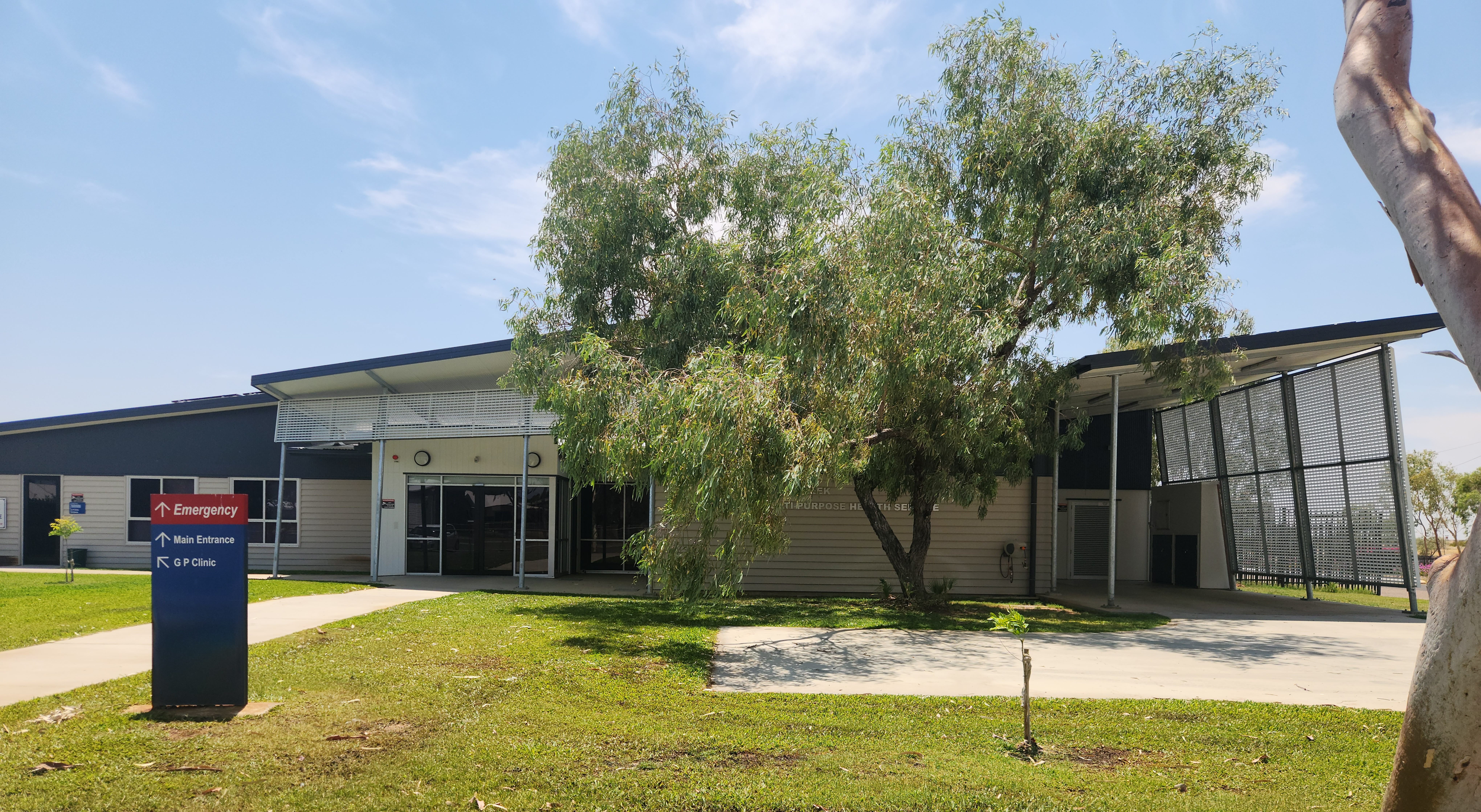
In contrast, during her first professional five years working in New Zealand, she had cared for up to six patients at a time in some medical wards. “Five to six was the norm – you’d never, ever have under five patients, it just didn’t happen.”
‘You have more time to really spend with your patients and get to know them. With four patients I felt like I could actually give holistic care.’
On one New Zealand acute renal and stroke ward, Skye said she was looking after five “very sick” patients, and would spend the entire shift running. All the patient cares needed two people, but there were usually only a couple of HCAs available to help.
“So you’re all really really pushed for time – and you’re clinically assessing these people and you’re giving medications – and stroke and renal are very high acuity specialities.”
While it was hard to compare the urban settings she had generally worked at in New Zealand, with the Queensland rural settings, she said mandated ratios had made a “huge” difference.
“It’s still a stressful environment, it’s still a hospital, there’s still funding issues – there’s still the queues in ED we experience. But because you all have the lesser ratio, you all can help each other and so there was more time found to go over problems.”
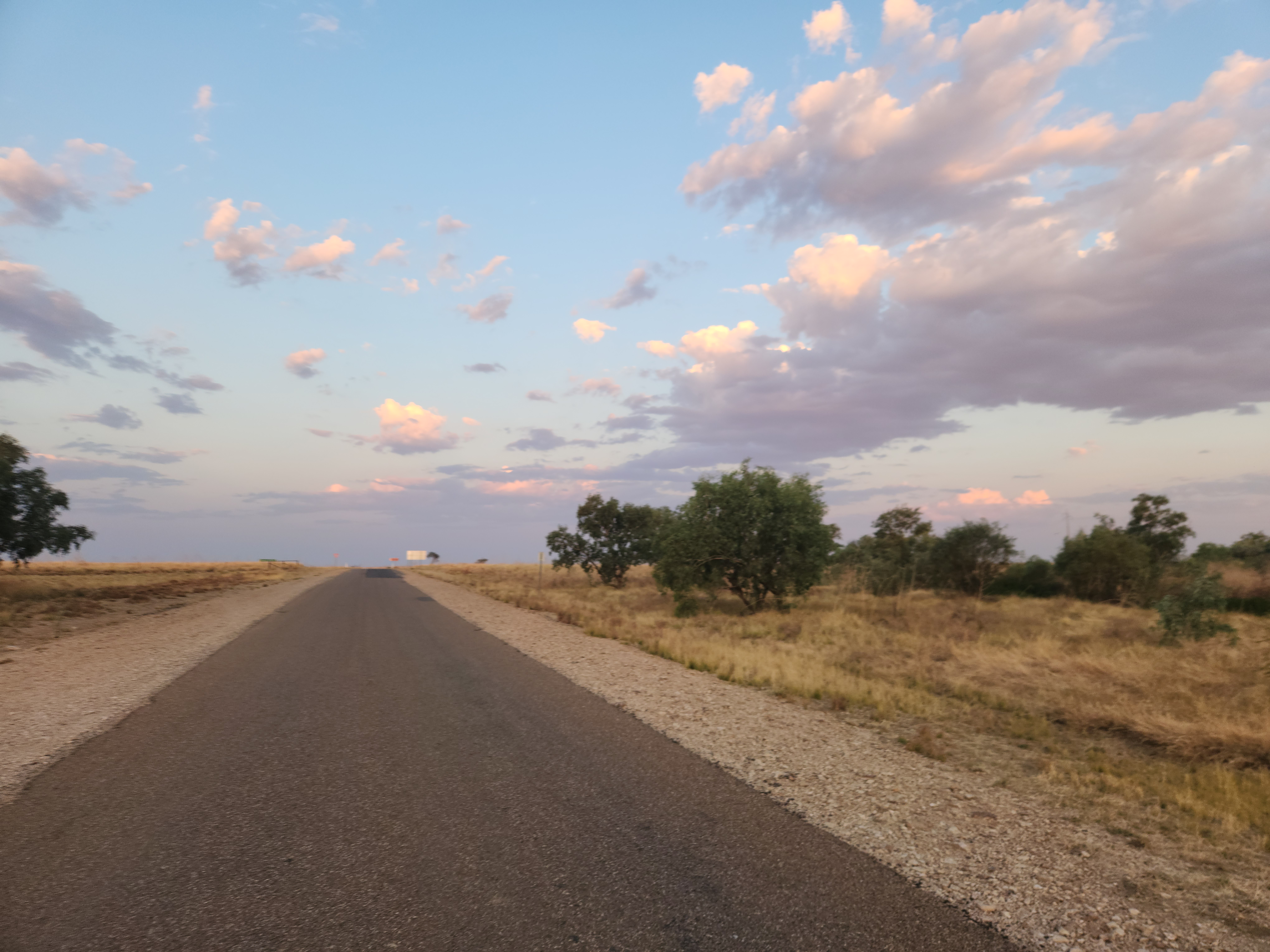
Ratios allowed nurses to give safer, holistic care – and have time to think critically about what is important.
“You have more time to really spend with your patients and get to know them. With four patients I felt like I could actually give holistic care,” Skye said.
“You can go to your other colleagues and help them, or go sit by the bedside and hear somebody’s story and be like: ‘Okay, how can we help you?’ Or there’s some grievance or they’re upset. So you just physically have more time or you feel a bit more capable or on top of things for patients.”
‘It’s such a hard space – there’s not enough support and not enough nurses and we just keep on getting more and more work’
‘Not perfect’
Queensland wasn’t perfect – sometimes the hours were shockingly long with some choosing to work double shifts up to 20 hours – but Skye said ratios definitely helped nurses provide safer care.
In New Zealand, she had usually been rushing around to get everything done in time.
“I found you had to cut corners and all nurses do it,” she said. “You have to cut corners because there are certain things you have to get done at a certain time. You’re trying to do the best you can within your capability but you’re doing it in a system that’s not working for you – so you’re constantly working against it.”
She came back to New Zealand earlier this year and tried a six-week district nursing contract – but found it too hard.
“The first week I remember just breaking down because the expectation was so high – you had to see so many patients.”
‘Really scary’ conditions
Demand was so high, Skye said she did not feel she could practise safely, which was “really scary”.
“I think what we’re seeing in the community now is patients are sicker, acuity is higher – and it’s not just wound cares, patients have become more complex as well.”
Skye – who is on holiday in Wellington but about to return to Queensland – said she didn’t know if she would ever come back to work as a nurse in New Zealand.
“But at the same time, I love this country – it’s bittersweet. I don’t think I want to nurse here anymore. I’m so burnt out after those six weeks, I was just like ‘this isn’t safe’.”
‘It’s such a hard space – there’s not enough support and not enough nurses and we just keep on getting more and more work.’
Skye believed pay rates were also better in Australia, although as she was being paid agency rates she could not comment on permanent pay rates.
Before she left to return to Australia, she told her New Zealand colleagues what an amazing job they were doing.
“It’s such a hard space – there’s not enough support and not enough nurses and we just keep on getting more and more work.”
More than 9000 New Zealand nurses had registered to work in Australia in the 10 months to February — an average of 900 per month, RNZ has reported.
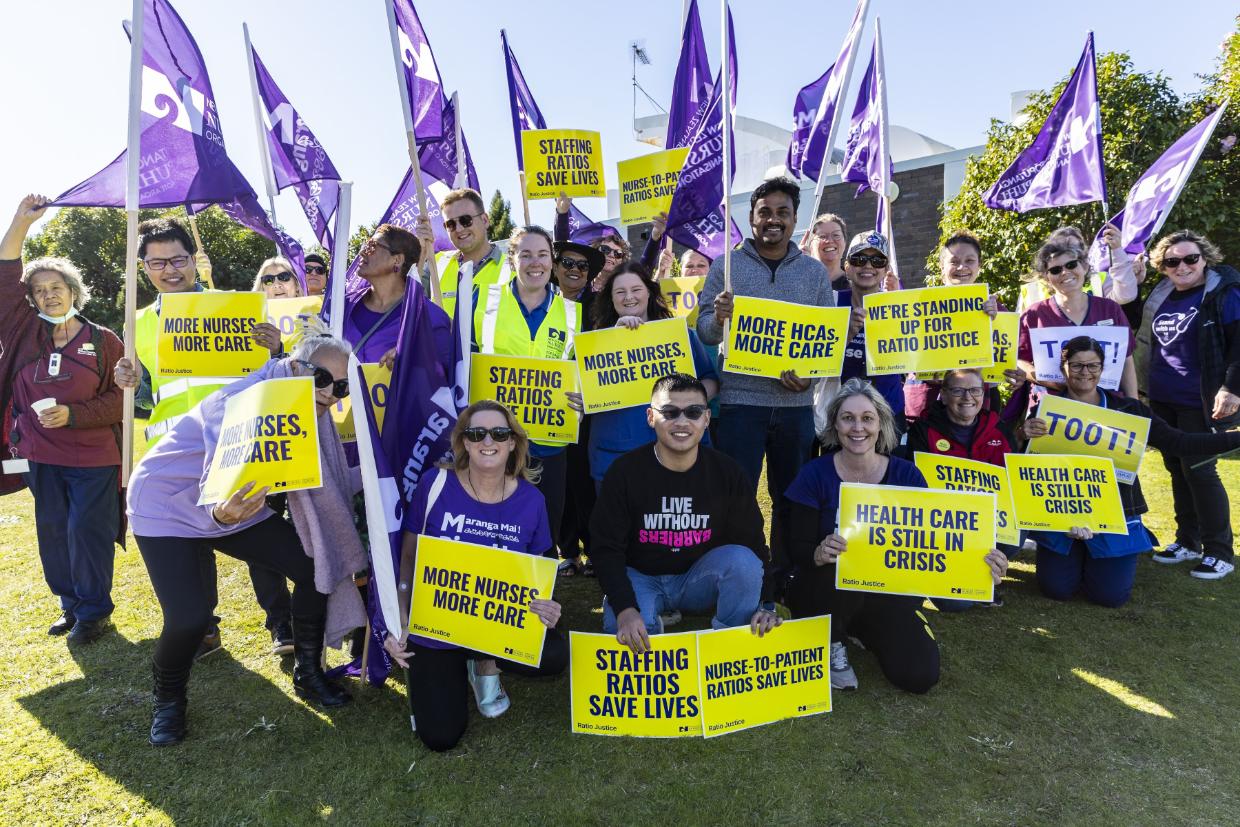
Call for nurse ratios in NZ
Speaking at a rally outside Wellington Hospital last week, NZNO kaiwhakahaere Kerri Nuku said in nursing in New Zealand was “in crisis”.
“If this continues, we will see compromised health care . . . and we’ll see more of our nurses leave for Australia, where they have implemented nurse/patient ratios that recognise that nurses are a valued workforce and that there must be a minimum on every ward.”
In New Zealand, ratios must also be te Tiriti o Waitangi-led, and consider skill and culture mixes, Nuku has said.
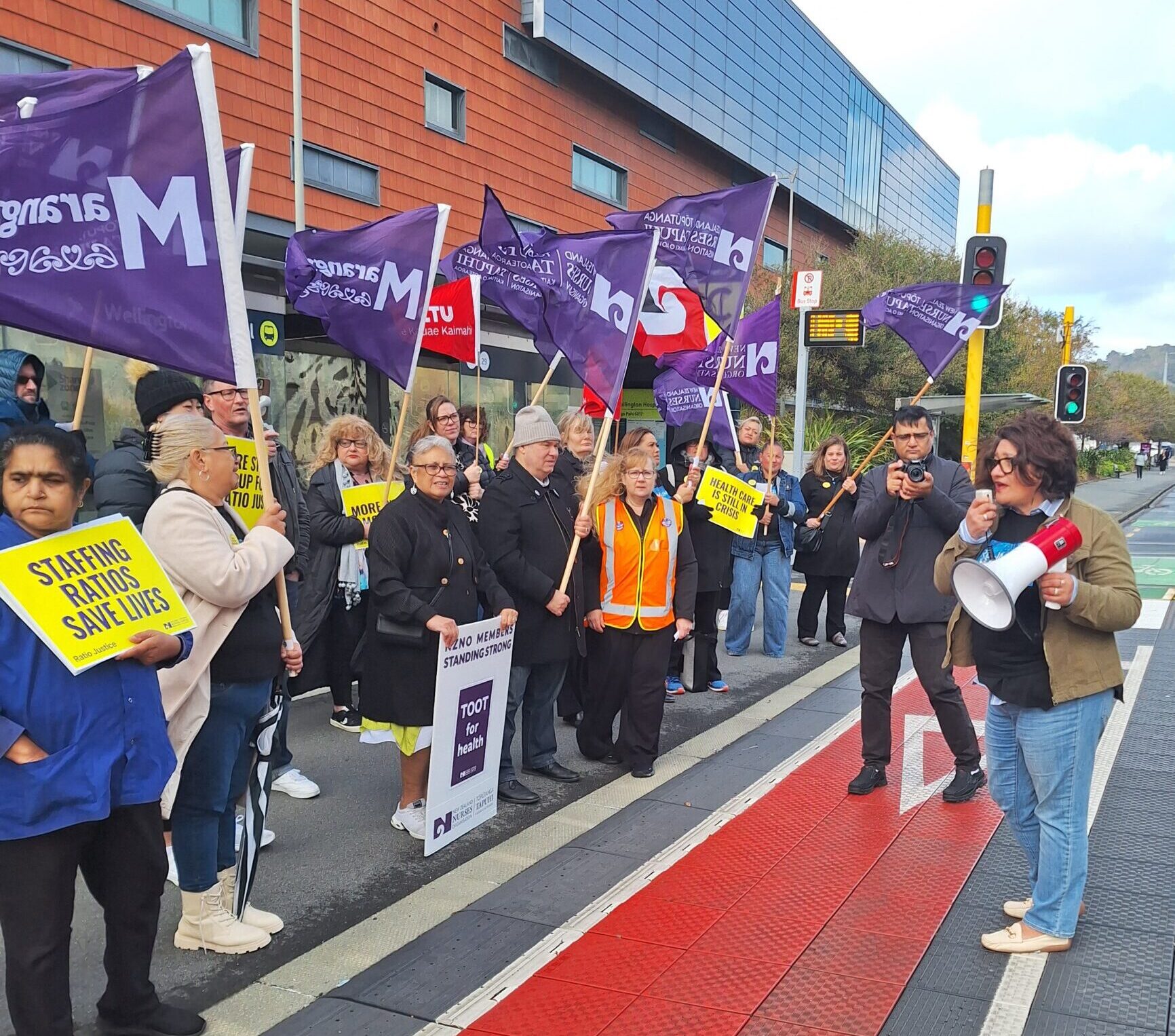
In the two years after ratios were first mandated in 2016, QNMU said 145 deaths and 255 readmissions had been avoided, as well as $81 million saved.
Nurse ratios have also been legislated in California, British Colombia, Ireland and Wales.
NZNO is campaigning for legally mandated ratios in New Zealand, with a two-week nationwide bus tour planned for June and conference in July aimed at health decision-makers.
Chief executive Paul Goulter said evidence showed ratios brought better health outcome for patients and less burnout for health workers.


